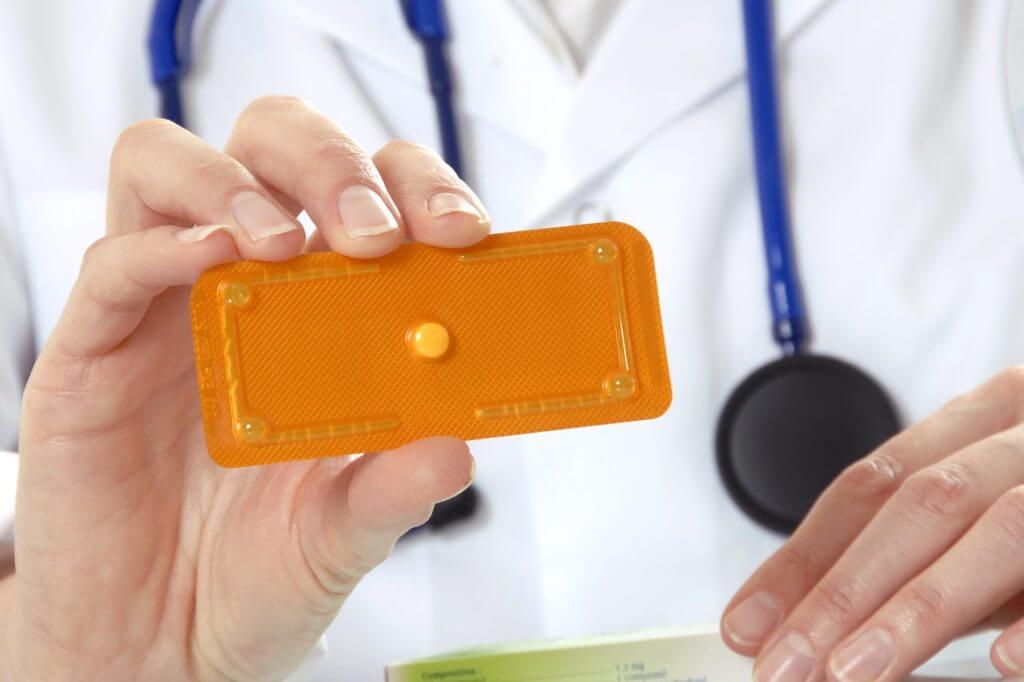Birth Control Implant: is Nexplanon Right for Me?

In the life of every adult woman, sooner or later arises a question of choosing one of the available contraception options: vaginal rings, intrauterine devices, contraceptive pills, implants, condoms, and so on. Modern women want to live a full life and take the point of pregnancy and family planning seriously. That is why the demands to the contraceptive are hight. A great birth control method should be effective, comfortable, safe, cause no pain, and need low maintenance. In this article, we will examine one of the most popular and effective methods for birth control – contraceptive implants.
Long-Acting Birth Control Methods – Implants. What are They?
A contraceptive implant Nexplanon is a small silicone rod 4 cm long and 2 mm in diameter, which is inserted under the skin on the inner side of the shoulder. The aim of the implant is a long-term contraceptive effect. The period of validity from the moment of installation is three years, then the contraceptive effect ends, and it must be replaced with a new implant. Nexplanon and similar birth control implants are used in more than 40 countries.
How do the Contraceptive Implants Work?
Once placed in the arm, the implant releases the hormone etonogestrel, synthetic progesterone. The hormone enters the bloodstream and suppresses ovulation. Simply put, the egg does not leave the ovaries, so after sex, the sperm cannot fertilize it, and the woman does not get pregnant. In addition to suppressing ovulation, etonogestrel increases the viscosity of cervical mucus in the cervical canal, preventing sperm from entering it. The hormone also inhibits the growth of the endometrium – the inner lining of the uterus, and if fertilization still happens by some miracle, the fertilized egg cannot gain a foothold and begin to develop. All this increases the preventing pregnancy effect.
How Effective is Nexplanon Birth-Control Implant?
The effectiveness of contraceptives is assessed using the Pearl index – this is the average number of unplanned conceptions in one hundred women who have used the same contraception during the year. The smaller the index, the more reliable the method.
Implant Pearl Index – 0.1%. This means that one woman in a thousand became pregnant during the year of using the birth control method Nexplanon. All cases of pregnancy are associated with a violation of the implant insertion technique. Today, the implant ranks first in terms of efficiency, overtaking the intrauterine device.
If a woman becomes pregnant while using the Nexplanon implant, there are two options for the development of events. If she plans to terminate the pregnancy with medication or surgery, the implant is left. If you decide to give birth, the implant is removed.
Please note that hormonal implants do not protect against HIV and sexually transmitted infections. If you are unsure of your partner, use condoms in addition.
Who is the Best Candidate to Get Nexplanon?
- Women of any age before menopause. The UK National Health Service recommends implants from sexual intercourse to menopause.
- Breastfeeding women. The hormone from the implant passes into breast milk in low doses that are harmless to the baby and does not affect the quality and quantity of milk.
- Patients with dyshormonal gynecological diseases. Gynecologists can offer a Nexplanon implant as a treatment option for dysmenorrhea and endometriosis.
- Women with chronic diseases. Under the supervision of a physician, the implant can be used in women with diabetes mellitus and systemic lupus erythematosus.
When and Why You Cannot Get the Contraceptive Implant?
- Breast cancer. There is no specific data on the safety of using Nexplanon for hormone-dependent tumors.
- Unexplained vaginal irregular bleeding. An examination is necessary to find out their cause and exclude pregnancy or malignant tumor.
- Diseases and tumors of the liver. Etonogestrel is poorly metabolized in women with hepatic dysfunction.
- Thrombosis. If a woman has a history of deep vein thrombosis, venous thromboembolism, pulmonary embolism, retinal vein thrombosis, stroke, or myocardial infarction, the hormone from the implant may increase the risk of blood clots.
Before the insertion of Nexplanon, the patient should undergo a medical examination of the gynecologist, check out the history of diseases for previous blood clots, heart attack, stroke, etc., to make sure the contraceptive is safe to use in every individual case.
How is Nexplanon Inserted?
The gynecologist prescribes the installation the next day after the last active pill, that is, on the first day of the menstrual cycle.
There is no need for any incision to install an implant: it is inserted under the skin using a special applicator. The doctor marks the insertion site with a marker – on the inner side of the shoulder, between the elbow and armpit – and the direction of the implant. Then the doctor anesthetics the area with local anesthesia. When the area gets numb, the doctor applies the applicator and inserts the implant.
As a result, the whole procedure takes no more than 20 minutes. There will be a small mark on the arm, like from an injection. After the injection, the doctor will bandage the hand, recommend taking off the bandage after a few days and come for a second appointment in a week, since it takes time for the swelling and pain at the injection site to pass. At the follow-up appointment, the doctor will probe the implant to make sure it was in the correct position.
If everything is done correctly, the patient should not feel the implant in hand. however, a slight pain is within the norm.
What are the Possible Negative Side Effects of Nexplanon Birth-Control Implant?
In 20% of women, irregular periods appear immediately after injection. In half of this 20%, menstrual cycles disappear in a year. Another 22% of women stop menstruating completely one year after the implant is inserted. It is not harmful to your health, but it can be uncomfortable. About every tenth woman, due to irregular discharge, removes the implant ahead of schedule.
In addition, for the first few months after the implant is installed, a woman may experience unpleasant side effects like headache and dizziness, pain in the abdomen, back, or chest, period cramps, nausea, problems with high blood pressure, decreased sex drive, mood swings, breast tenderness, weight gain, dryness in the vagina, and increased oily skin. Moreover, in rare cases, if the woman managed somehow to get pregnant, there are high chances it will be an ectopic pregnancy. Anyway, everything is individual, and to avoid any problems with the health, the patient should undergo regular medical examinations with the OB-GYN doctor.
How is Nexplanon Implant Removed?
Nexplanon lasts for three years. Then, if a woman wants to continue to use this method, the implant must be removed and replaced with a new one. If she decides on giving birth, feels discomfort, has severe side effects, wants to choose another birth control option, or in case the implant has changed shape, it can be removed at any time. After removal in 90% of women, fertility is restored within three weeks.
For extraction, the gynecologist makes a small incision (2-3 mm) and extracts the implant with special forceps. A new one can be introduced immediately into the same place, through the same incision. After removal, the incision is closed with a sterile bandage (a small scar may be left at the place), an adhesive plaster is applied, and a pressure bandage is applied to reduce bruising, which can be removed after a day. Sometimes the implant can be difficult to remove due to excess subcutaneous fat or if the doctor inserted it too deeply during installation. In this case, extraction can be painful.
To Sum Up
The modern market offers a quite wide choice of birth control medications, hormonal and completely hormone-free, long-acting, and one-time use (condom, ring, IUD, pill), so most women can choose the right method. Nexplanon is one of the most popular birth control options in the world, and there are definitely objective reasons for its popularity. Is it right for you? If you do not have any contraindications, then the answer is positive. However, you still need a consultation with the gynecologist before you make a choice of your perfect contraceptive!






